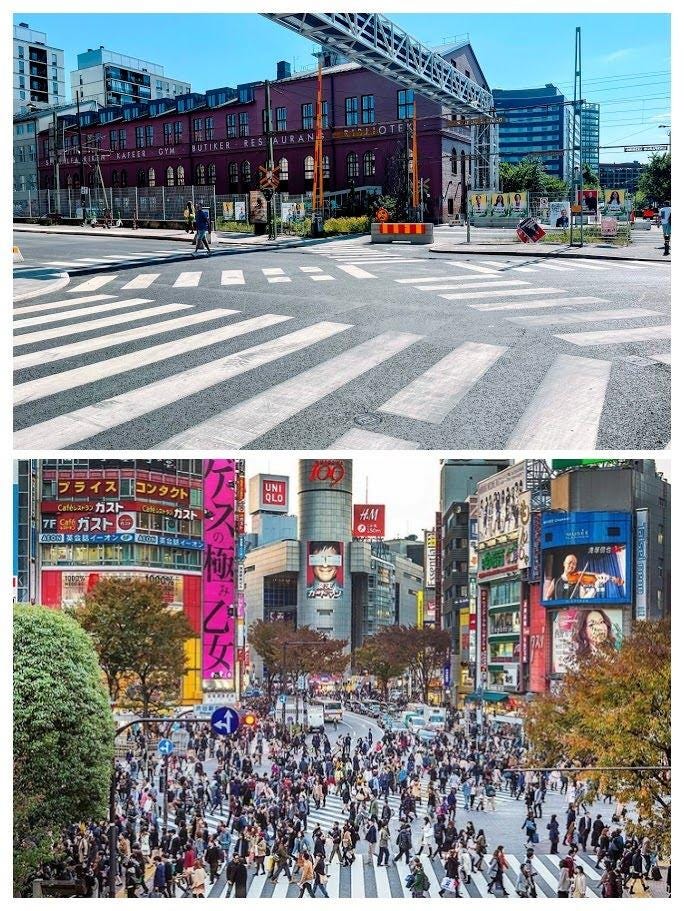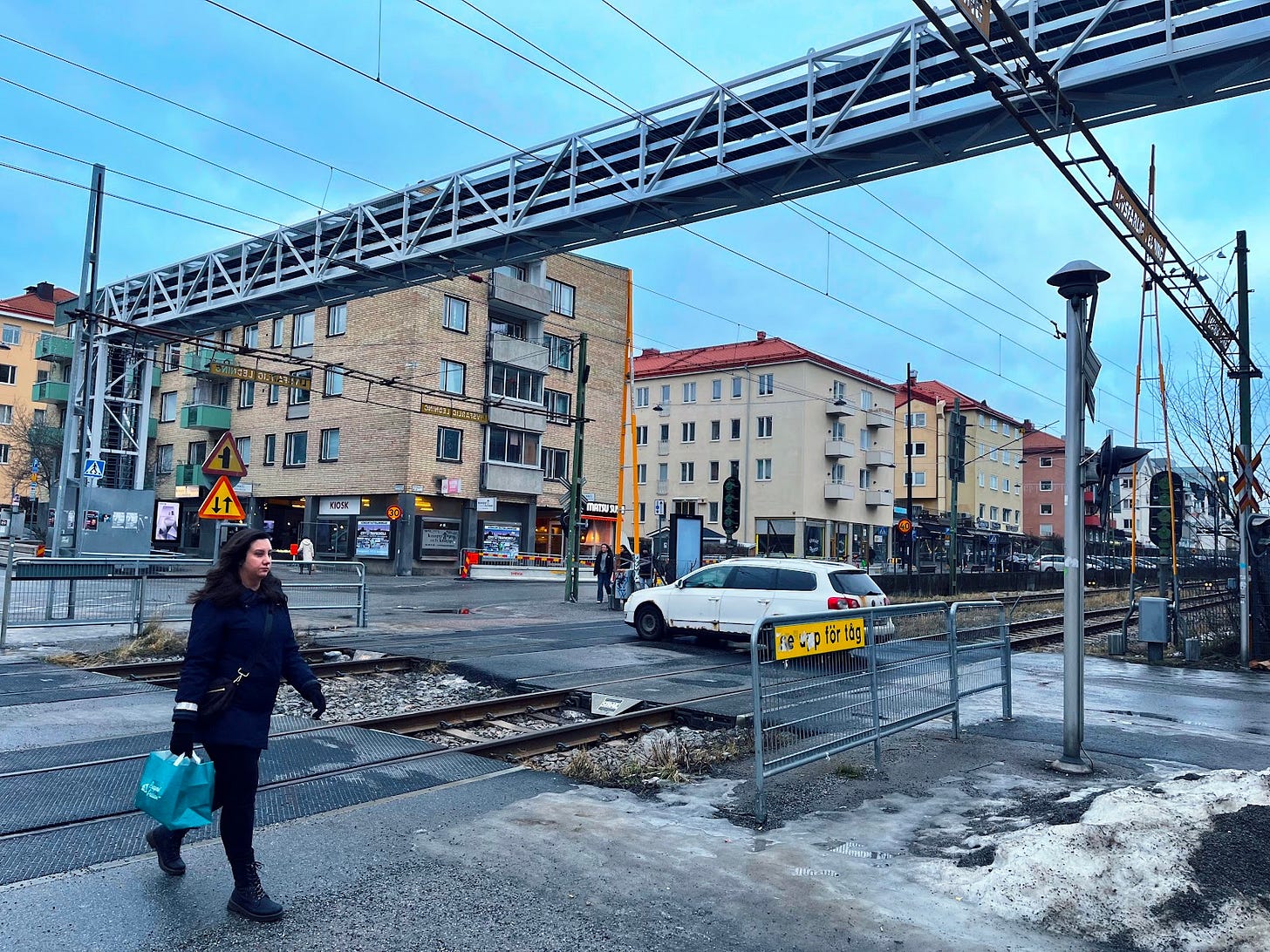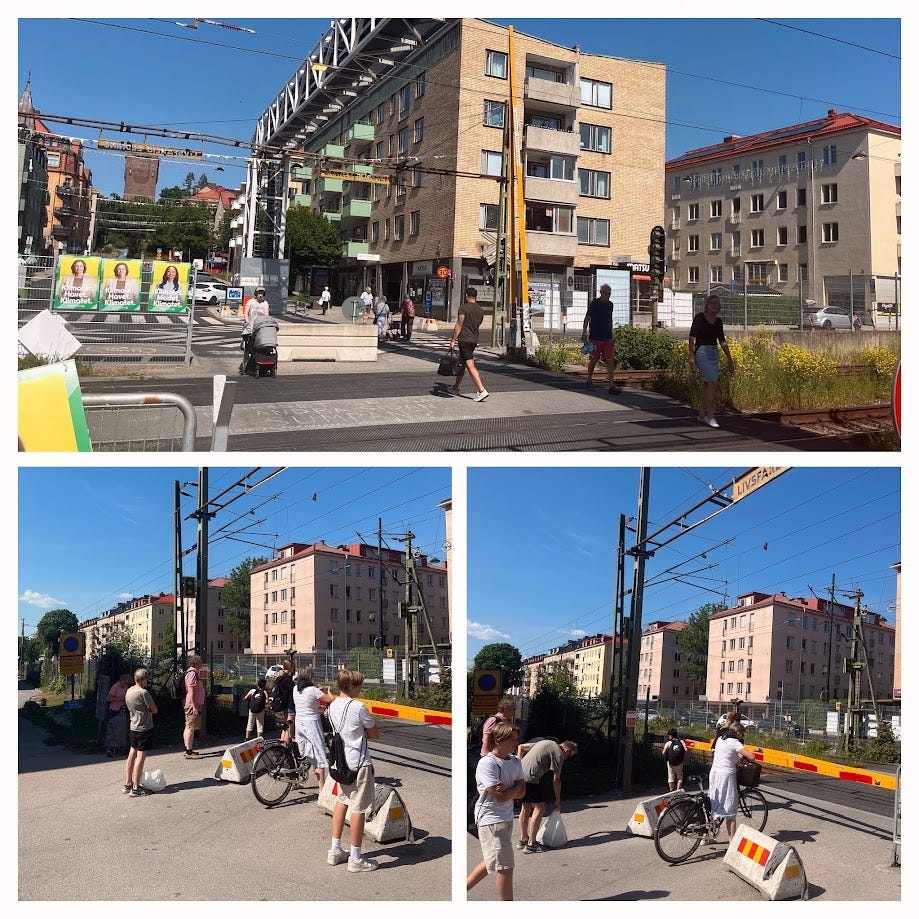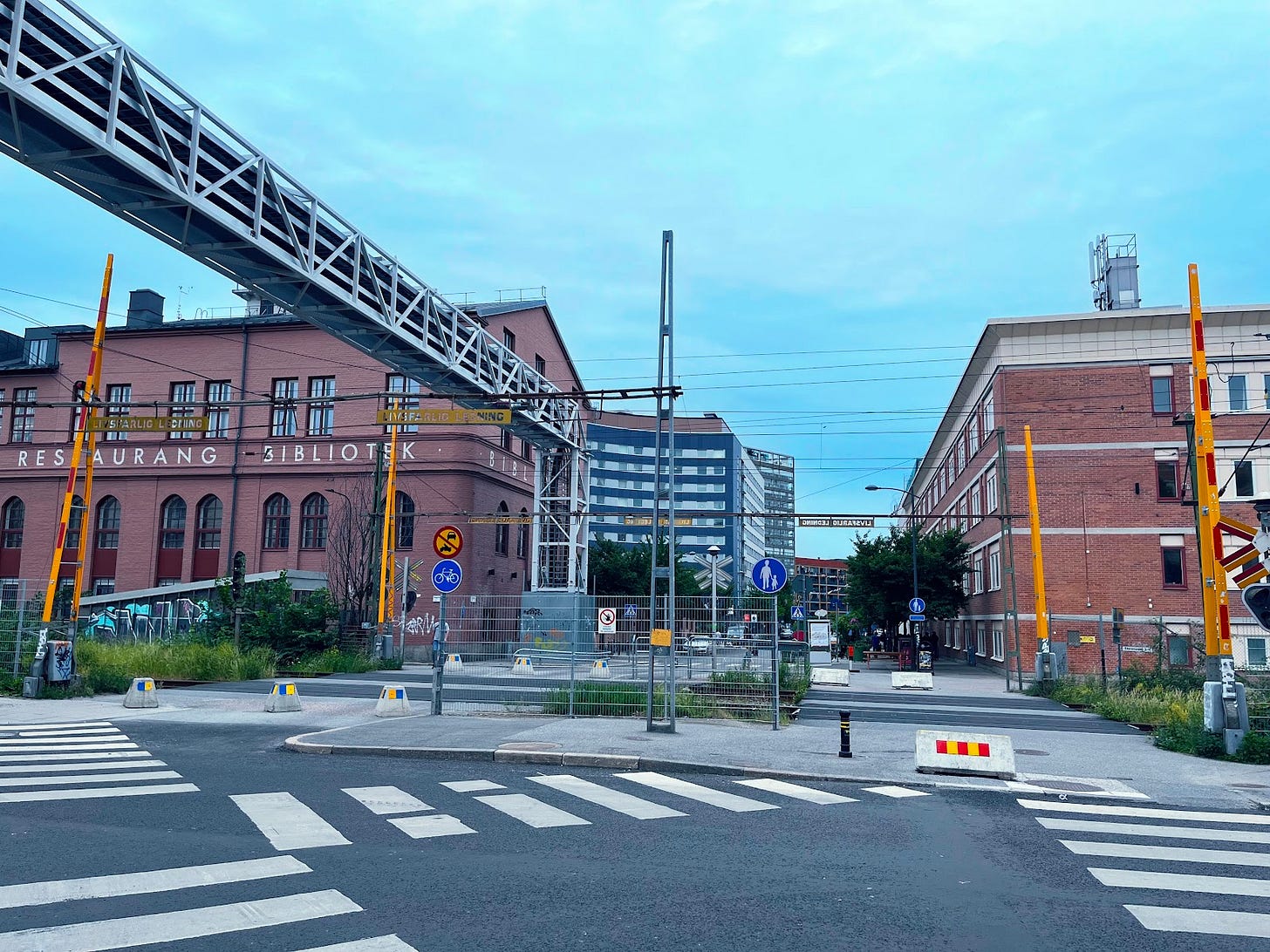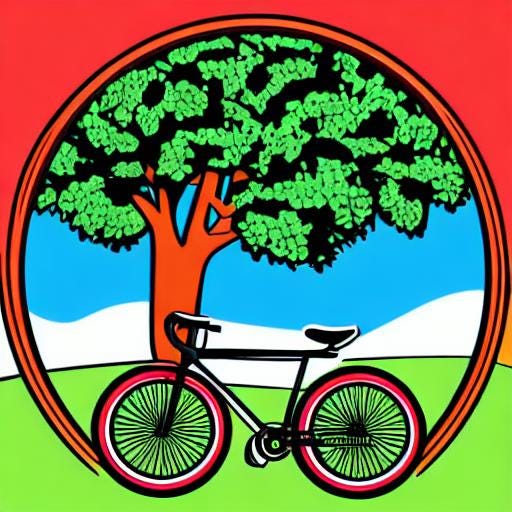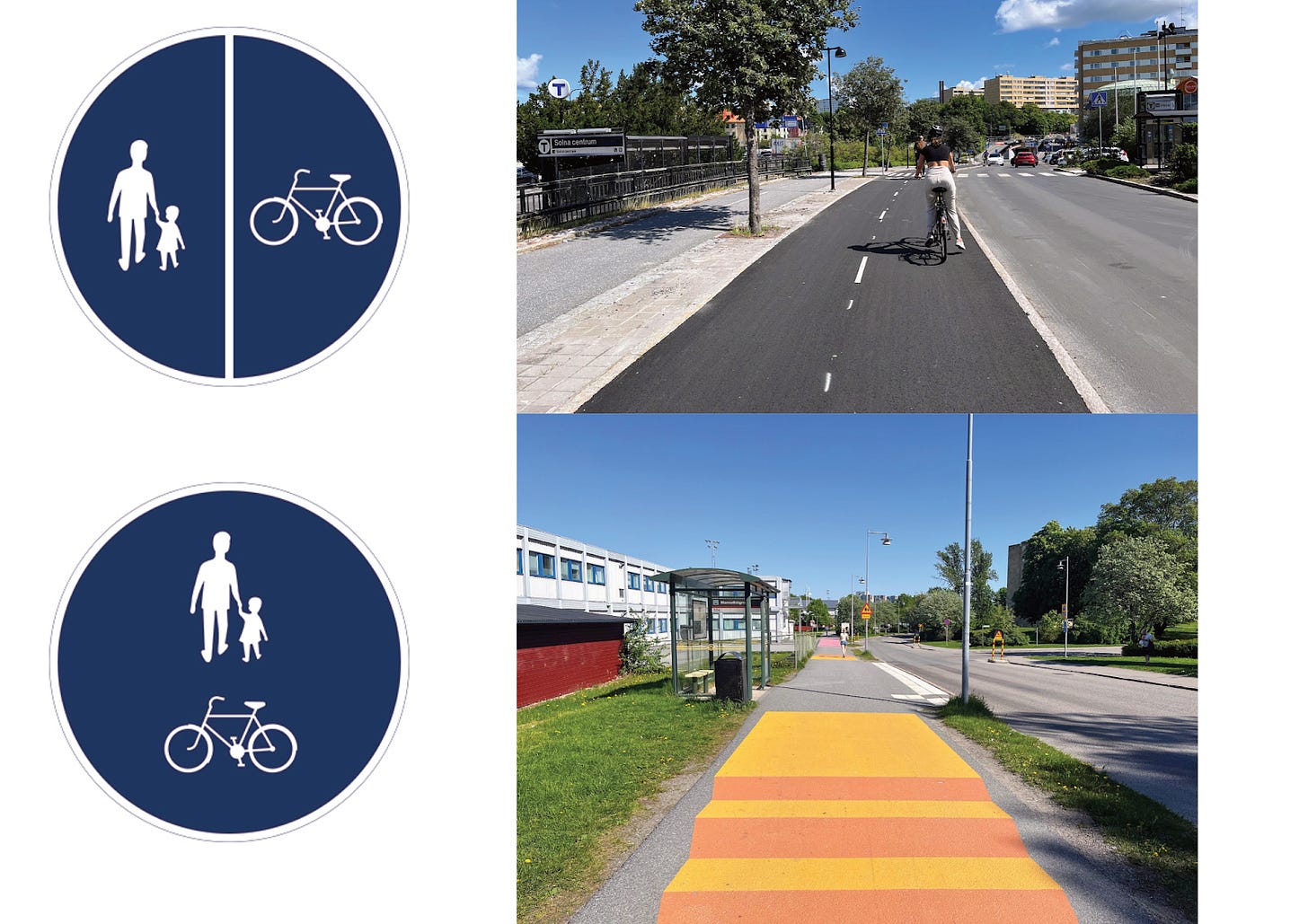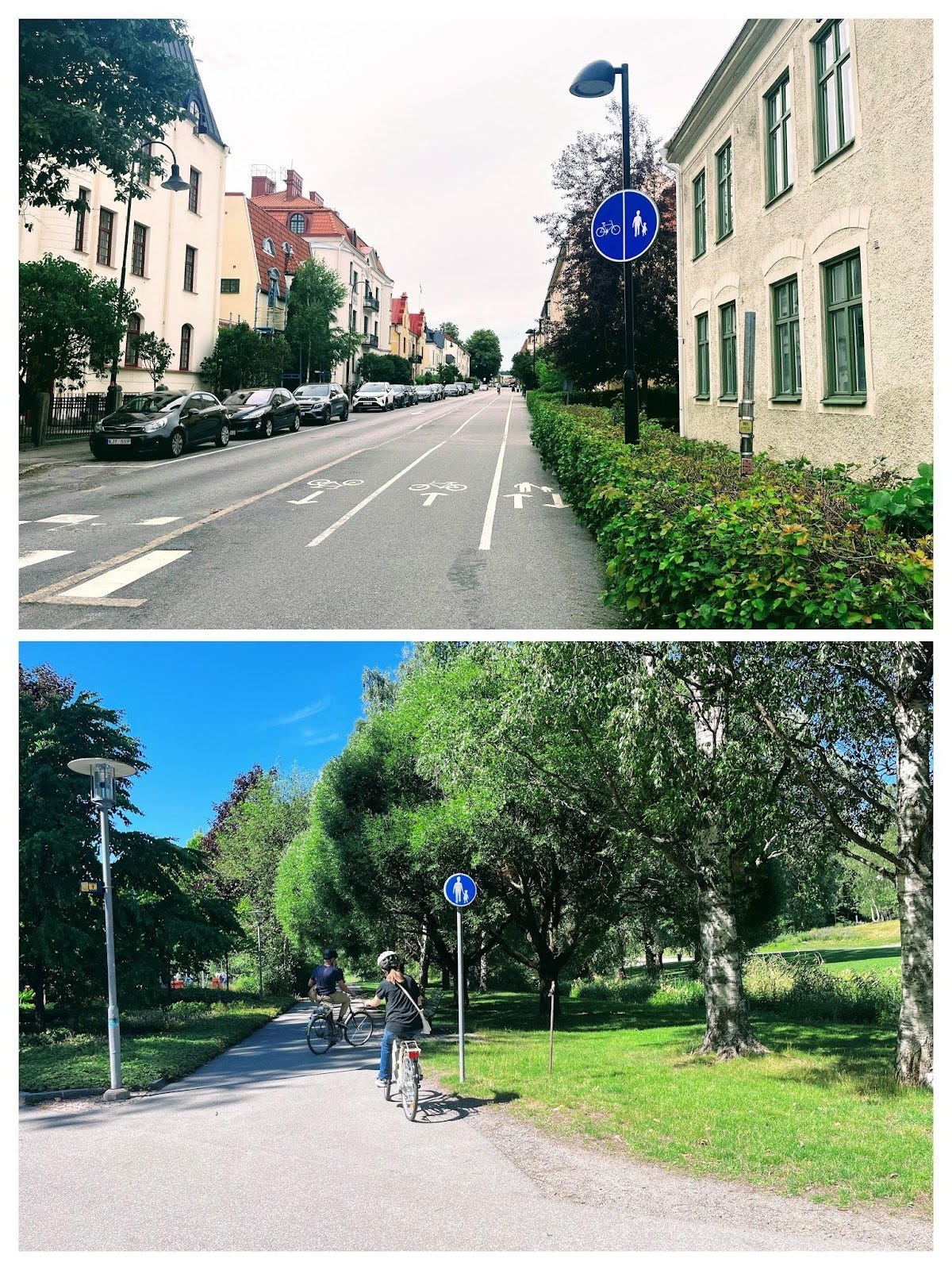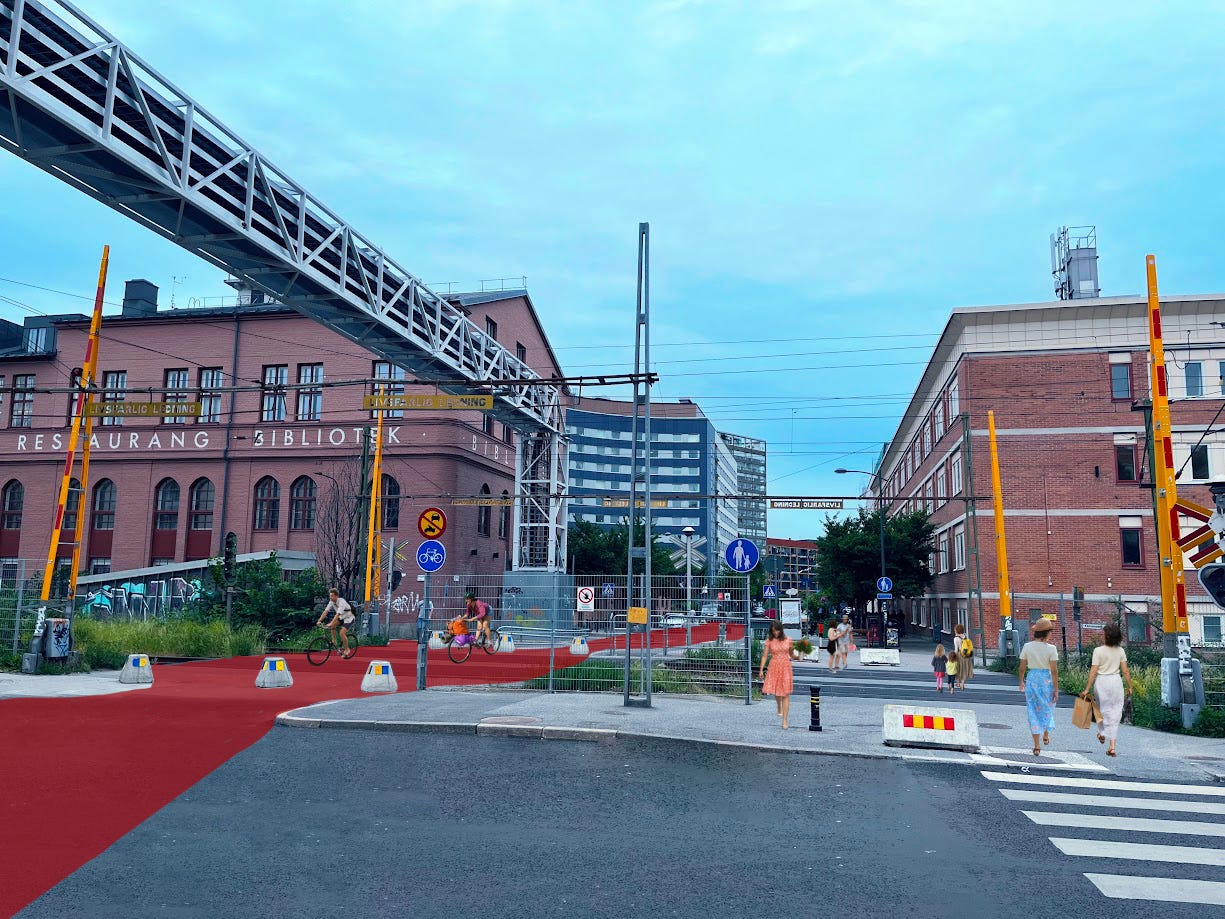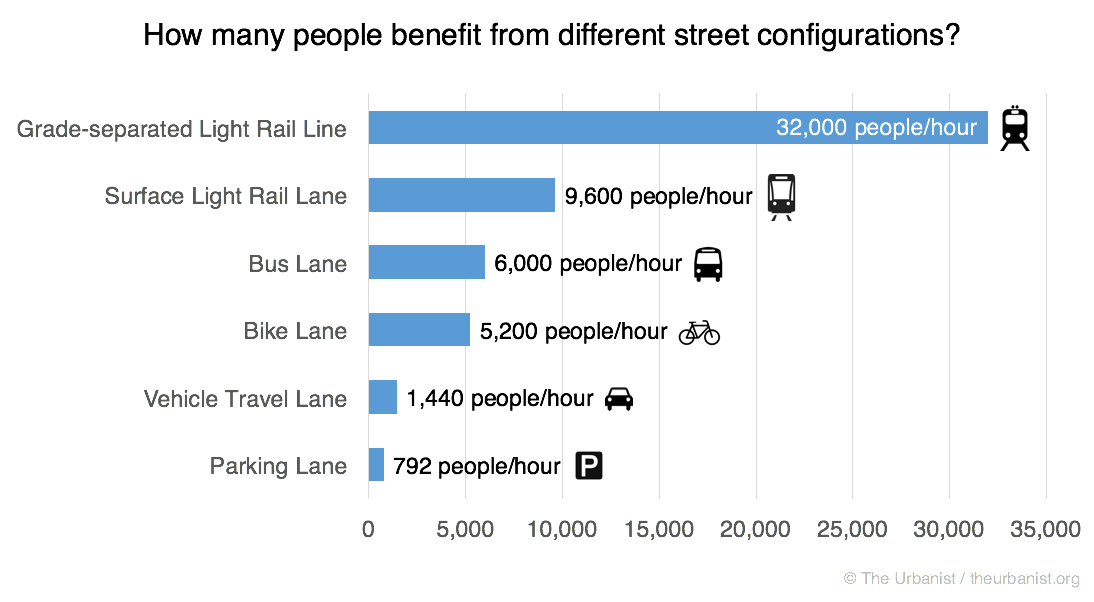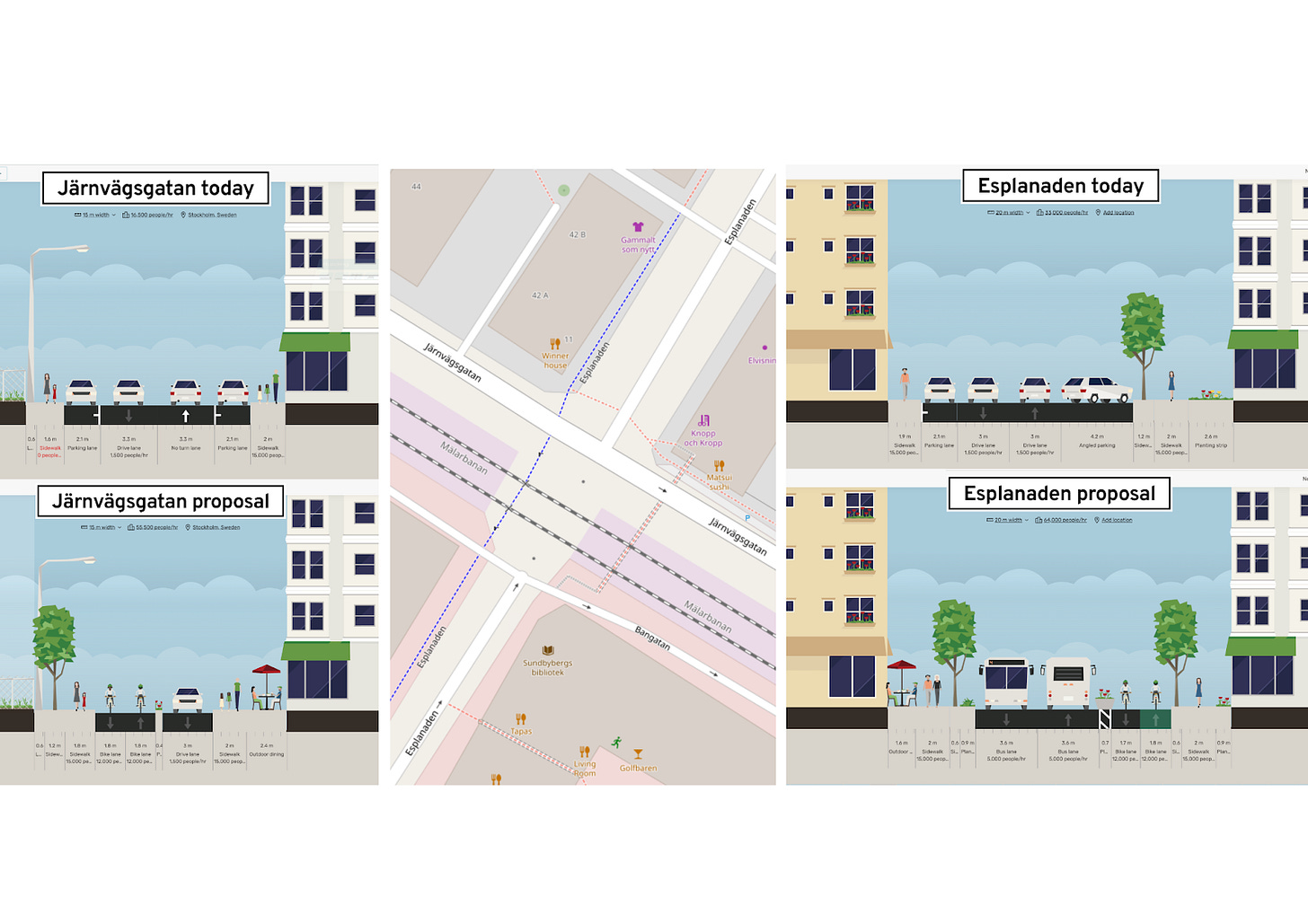Paint isn’t infrastructure, but it sure helps.
Is this Shibuya? No, it’s just a new crossroad in Sundbyberg.
Sundbyberg vs Shibuya in Tokyo (1)
Situation before January 2024
Before January, this intersection looked quite different. Cars used what is now the bike passage, while pedestrians and cyclists were cramped together. They were banned from the passage after a car accident (2), creating an opportunity for better urban design. The absence of cars was supposed to provide more space for pedestrians and cyclists, but the redesign did not realize this potential.
The intersection back in December 2023
The municipality opened both railway passages for pedestrians and bikes without a clear division between the two. This lack of separation has proven ineffective, leaving the area chaotic for cyclists and pedestrians. As a result, people walk, bike, and drive mopeds without clear guidelines, leading to confusion and disorganization. After a few weeks, they added a diagonal zebra crossing but did not specify a pedestrian and cyclist passage.
The crossroad back in May 2024
After a few months, the municipality finally placed traffic signs at the crossing, indicating the passage for bikes separated from the passage for pedestrians. It is an improvement, but still, it’s not enough. There are no designated lanes, and people often find themselves confused without proper markings on the ground. On top of that, the diagonal zebra is more confusing since it brings pedestrians to where the bike lane is.
Current situation at the crossroad
Why improvement is needed
A proper division of space is crucial for the safety and convenience of all users. When pedestrians and cyclists share the same area without clear delineation, traffic users get annoyed with each other and get tangled in a traffic mess. No one feels comfortable stopping on a railway pass, which discourages walking and cycling on this route. If bike paths are clearly divided, safe, and have fewer obstacles, more people will be encouraged to bike. Don’t get me wrong; making one bike railway passage will not make a big shift towards more people cycling, but if you resolve several hindrances on an imaginative bike path, more people will dare to bike.
Clear divisions not only improve safety but also enhance the overall user experience. Cyclists can ride at a consistent speed without having to dodge pedestrians, and pedestrians can walk without the fear of being hit by a bicycle. This separation is particularly important in busy areas like Sundbyberg, where foot traffic and bike traffic are high by Swedish standards. Properly marked and designated lanes ensure everyone knows where they are supposed to be, reducing confusion and promoting smoother flow.
New bike lane with a clear division in Solna vs. shared space in Ör, ‘slowing’ cyclists with an optic illusion. Which one do you prefer?
To address the needs of pedestrians, wide walkable spaces are essential in dense areas, especially where there is a lot of retail, as in Central Sundbyberg. Too often, pedestrians lose space to bike lanes when a proper road diet could reallocate space from cars to bike lanes instead. This approach would ensure that both cyclists and pedestrians have ample and safe areas to use, enhancing the overall urban experience.
Picture above - Pedestrians lost space to the bike lane instead of removing car parking.
Picture below - Cyclists taking the walking path instead of a shared space on the left, outside the image.
The new development plan of central Sundbyberg involves putting the railway underground. (3) With this plan, this problem will not exist anymore. The concern is that the plan has been postponed for many years, so with little infrastructure, a temporary plan needs to exist.
A bit of a paint makes it more clear.
Efficiency
Car infrastructure is very inefficient. So, we need to strive for better bike and pedestrian infrastructure. Users benefit differently based on their needs, with cyclists, bus users, and light rail passengers enjoying greater space efficiency and capacity benefits than car users. This underscores the importance of reconfiguring street space to accommodate more efficient modes of transportation, particularly as urban areas become denser. (4)
To accommodate different street configurations, it's clear that the intersection of Järnvägsgatan and Esplanaden in central Sundbyberg does not meet current design needs. Drawing inspiration from a redesign in Dublin (5), Järnvägsgatan could be transformed with a 15-meter street section that includes wider sidewalks, public seating areas with more trees, and cycle lanes in both directions. At the same time, it becomes only a one-way street for cars, replacing the current car parking and dual car lanes.
Esplanaden, a particularly wide street, has significant potential for improvement. It could feature an expansive public space with a sidewalk, bus, and cycle lanes in both directions. Some of these changes could be implemented even before the development plan for Sundbyberg progresses, addressing the current issues at this busy intersection.
If you want to explore and redesign the streets around you, I recommend Streetmix, the tool I used here.
Solution
It is crucial to divide the space with proper paint on the railway. Cyclists should go on one side of the railway pass, which used to be designated for cars, and continue to cycle on the bike-priority street. That leaves much more space for pedestrians to roam around one of the busiest streets in the area. As Sundbyberg grows, investing in proper infrastructure will ensure it remains a safe and attractive place for all its residents.
Bibliography
Fillipo, J. S. (2024) Shibuya, AFAR Media. AFAR Media. Available at: https://www.afar.com/places/shibuya-shibuya (Accessed: 9 July 2024).
Snart stoppas bilar från att korsa järnvägen (2024) Mitt i. Available at: https://www.mitti.se/nyheter/snart-stoppas-bilar-fran-att-korsa-jarnvagen-6.26.199740.714e525421 (Accessed: 28 June 2024).
Kuronen, A. (2022) Häng med på promenad i framtidens Sumpan, Mitt i. Available at: https://www.mitti.se/nyheter/hang-med-pa-promenad-i-framtidens-sumpan-6.27.39723.a2a7075126 (Accessed: 28 June 2024).
Babadjanov, A. (2018) The Supply And Demand Of Street Space - The Urbanist, The Urbanist - Examining urban policy to improve cities and quality of life. Available at: https://www.theurbanist.org/2016/05/26/the-supply-and-demand-of-street-space/ (Accessed: 5 July 2024).
Ginty, C., Donnchadha, C. Ó. and White, S. (2023) Deadline looms for radical Dublin City Centre Transport Plan feedback, but what’s included?, IrishCycle.com. Available at: https://irishcycle.com/2023/11/16/deadline-looms-for-radical-dublin-city-centre-transport-plan-feedback-but-whats-included/ (Accessed: 9 July 2024).


